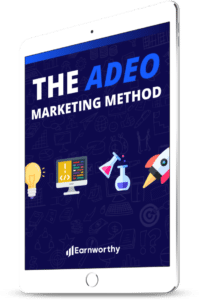
Not every blog post is worth your time and attention. So why did you decide to read this one? Unless you were just randomly clicking around on the screen, something about the headline caught your interest.
But a headline alone is not enough to make us read the actual content of a blog post.
So, in this article I will share 7 components every blog post should have, if you want people to actually spend time reading the content. And hopefully that will translate in to more engagement with your brand, or maybe even a transaction at some point.
Let’s dig in!
1. Write headlines in a list format
List posts have been known to generate higher clickthrough rates on average than posts without lists. It has something to do with the fact that we don’t have a lot of time to spend wading through paragraph after paragraph of content. We want the facts and we want them fast.
Creating a list post allows readers to skim or scan the content, so they can get to the most important points as quickly as possible.
In fact, the bulk of you reading this very post are not reading every word. I can throw in a random sentence about cats, and most of you probably won’t even notice it. For instance, did you know that cats sleep for approximately 70% of their lives? Talk about a dream job (pun intended)!
Okay, back to the program…
There is nothing wrong with skimming or scanning a blog post. I do it all the time. That’s the only way I can keep up with all of the articles in my Feedly queue.
So as a blogger, you should embrace those types of readers. Make it easy for them to consume your content. And the best way to do that is to set up your posts as lists.
Moreover, make sure your blog headline makes it clear that it is a list post, just like this one does.
2. Deliver on your promise
Having a list is not enough though. You should also add a promise to your headline, and then actually deliver on that promise in the body of your post.
In this example, the promise I’m making to you is that I’ll show you 7 ways to get more people to read your blog. I might not explicitly say that, but from the title, that is what you can infer.
Just make absolutely certain you deliver on what you promise in your headline. If not, you’re going to fall into clickbait territory, and that’s a place no blogger ever wants to go.
3. Create a compelling opening section
This one is tricky. That’s why the very last thing I do before I publish a post is revise the opening section.
It’s the first text visitors usually read after clicking on the link, so you better make sure it pulls them in. Otherwise they’re going to bounce.
Your opening section should be short, but it should also build upon the promise you made in your headline.
Scroll back up and read the opening section of this post to see an example of what I mean.
Notice that I say opening section rather than opening paragraph. As we’ll talk about later on, blog posts are very different from traditional long form content. Paragraphs are usually much shorter on blogs, so as to allow the reader to scan through the content with ease.
Sometimes you’ll publish a “paragraph” with only one sentence. Gasp! I know, I know, it’s so wrong. But it’s also so right.
If you really need to get someone to read something, put it on its own line.
See what I did there?
So, make sure your opening section (whether it’s one line or five lines) builds on the headline and shows your reader the basic path you’ll take to deliver on your promise. That’s it!
4. Use subheadings to break up the content
Getting back to the importance of skimmability and scannability, you’re going to want to use a fair amount of subheadings throughout your post so that readers can jump down to exactly where they want to be.
This point works in conjunction with our first tip above. If you’re going to write a list post, it only makes sense to break each list item up into its own section with a subheading.
Come on, I didn’t need to tell you that. But I did anyway. #SorryNotSorry
5. Feature a compelling and relevant image
A blog post without an image is like an ice cream cone without any ice cream in it. Sure, it’s okay, and I’ll still eat it, but come on! Where’s the ice cream?!
There are many reasons why your blog post should contain at least one big image, usually at the top. First and foremost, it looks good. People don’t want to stare at just a page of text. Blah!
Second of all, it helps your reader get a more complete picture of what you’re talking about. As the saying goes, “a picture is worth 1000 words.”
Lastly, it is very shareable. Facebook loves images. So does Twitter. So when your blog post gets shared on social channels, the image will be the main attraction. So make sure you choose a good one!
Yes, I realize that the image for this article is that of a dog reading from a laptop. How is that relevant? Well, it’s not 100% relevant, but let’s face it. You definitely noticed it. Sometimes you can have a little fun like that.
6. Write in a conversational style
I write how I speak. While it might not always be grammatically correct, it resonates with most readers.
Let’s face it; nobody is perfect, so why should we expect our writing to be perfect? A few grammatical mistakes or typos can even add to the authenticity of a post, so embrace them.
Now, I’m not recommending that you don’t proofread your posts. Do that, and do it well. But when things slip through, don’t freak out.
You have more to gain by writing with a comfortable, conversational style than you think.
Give it a try if you haven’t already.
7. End with a call-to-action
Every great blog post should end with some form of a call-to-action (CTA) for the reader to take. It might be as simple as asking for comments, suggestions, or feedback. Or maybe it’s a plug for a new product or service that is directly related to the post.
It doesn’t have to be super fancy either. Sometimes, all I do is ask for readers to connect with me on Twitter and share their thoughts about the article.
The point is, you shouldn’t let the end of your blog post be the end of the road for your readers. Always try to keep the train moving forward.
What would you add?
Since this blog post is meant to be a living example of the principles contained within it, there’s only one way to conclude. I need to get your feedback!

What did you think? Do these tips makes sense? Its okay, you can be honest. If you think I’ve overlooked something, let me know. You can comment below or strike up a conversation on Twitter.
I greatly appreciate the fact that you took time out of your day to read this post. Hopefully you’ve walked away with at least a few actionable tips that you’ll be able to use right away.
Oh, and if you write a blog post using all of these tips, send me a link. I’d love to be able to share it with my community.





